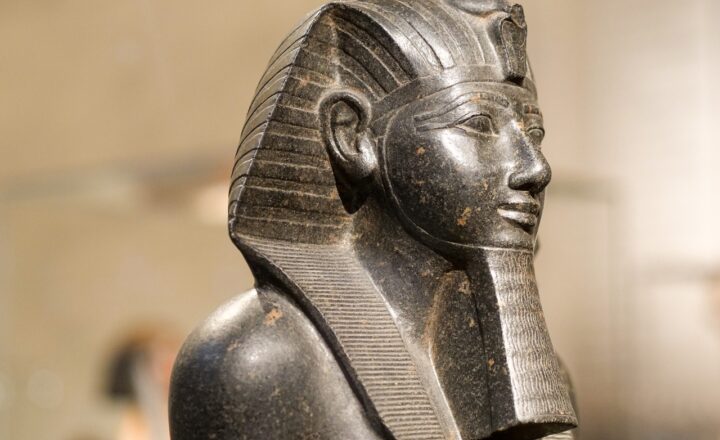
Ancient Egypt, often depicted as a realm ruled by powerful pharaohs, was home to several remarkable women who ascended to the highest echelons of power but are often overlooked in the annals of history. Throughout its long history, a select few women earned the esteemed title of pharaoh, ruling not only as queens but as sovereigns in their own right. In this article, we will delve deep into the lives and legacies of these extraordinary female pharaohs whose achievements and reigns deserve to be celebrated.
1. The Significance of Female Pharaohs in Ancient Egypt
In a male-dominated society, the emergence of female pharaohs is a striking testament to the fluidity of gender roles in ancient Egypt. Women, despite societal constraints, often wielded significant influence, particularly within the royal family. Marriage to powerful male pharaohs sometimes allowed women access to power; however, it is the female rulers who broke through the constraints of traditional roles that truly inspire.
These queens not only ruled as regents but also governed independently, making critical decisions regarding political, military, and economic matters. Their reigns symbolize a period in ancient Egyptian society where the lines of gender were both defined and fluid, allowing remarkable women to step into roles of unparalleled significance.
2. Hatshepsut: The First Female Pharaoh
Hatshepsut, one of the most famous female pharaohs of ancient Egypt, ruled during the 18th Dynasty (c. 1479–1458 BCE). Born as the daughter of Pharaoh Thutmose I, Hatshepsut was initially thrust into the role of regent for her stepson, Thutmose III, after the premature death of her husband. However, she chose to take on the full powers of a pharaoh, adopting male regalia, including a false beard, to assert her authority in a male-centric society.
Under Hatshepsut’s reign, Egypt experienced vast economic prosperity and an unprecedented architectural boom. She revived trade networks and commissioned magnificent structures, most notably the grand mortuary temple at Deir el-Bahar. Hatshepsut’s legacy is a compelling narrative of female empowerment, showcasing her as a visionary leader who furthered Egypt’s interests on the world stage.
3. Sobekneferu: The Enigmatic Ruler
The brief reign of Sobekneferu (c. 1806–1802 BCE) marks the end of the 12th Dynasty and is significant for being the first recorded woman to rule Egypt as a pharaoh in her own right. Known as the daughter of Amenemhat III, Sobekneferu ascended the throne after her brother, the last male pharaoh, passed away. Despite the brevity of her reign, she is remembered for her masculine portrayal, including the use of traditional pharaoh imagery, which emphasized her authority.
Sobekneferu’s inscriptions and monuments depict her as a formidable monarch determined to hold power. Although much about her reign remains a mystery, her legacy endures as a reminder that women have occupied powerful positions throughout history.
4. Cleopatra VII: The Last Pharaoh of Egypt
Cleopatra VII is perhaps the most recognized female pharaoh, often romanticized in films and literature. Ascending the throne in 51 BCE, Cleopatra was initially co-regent with her father, Ptolemy XII, and later with her brother, Ptolemy XIII, whom she would eventually outmaneuver in a power struggle. Cleopatras strategic mind and political acumen allowed her to maintain Egypt’s independence during a tumultuous period marked by Roman expansion.
Cleopatra’s relationships with prominent Roman figures like Julius Caesar and Mark Antony are legendary, intertwining her fate with that of ancient Rome. Her reign saw the last flickers of Egyptian sovereignty before the kingdom fell under Roman rule, marking a poignant end to the era of pharaohs. Cleopatra leaves behind a complex legacy, celebrated as a brilliant strategist and leader who sacrificed everything for her people and her dynasty.
5. Other Notable Female Figures
Besides Hatshepsut, Sobekneferu, and Cleopatra, a few other powerful women wielded influence in ancient Egypt and could be considered pharaohs or rulers:
- Nefertiti: The Great Royal Wife of Akhenaten, Nefertiti wielded unprecedented power, often depicted alongside her husband in religious and ceremonial contexts, influencing both politics and culture.
- Tiye: The wife of Amenhotep III, Tiye was a powerful figure who held substantial sway, even participating in diplomatic negotiations on behalf of her husband.
- Cleopatra Selene II: The daughter of Cleopatra and Mark Antony, she became the queen of Mauretania and exhibited strong leadership following her parents’ demise.
These women’s stories add depth and richness to our understanding of female leadership in ancient civilizations and challenge the narrative that power was solely the domain of men.
6. The Legacy of Female Pharaohs
The legacy of female pharaohs in ancient Egypt extends beyond their individual achievements. Their existence challenges traditional concepts of gender roles in leadership and governance. They offer us vital lessons regarding the complexity of power dynamics and the multifaceted nature of leadership,
Many of their monuments and architectural contributions remain significant historical sites today. While Hatshepsut’s temple stands as a monument to her accomplishments, the ruins of Cleopatra’s Alexandria echo the legacy of her political maneuvers and alliances.
In recent years, there has been a resurgence in scholarly attention to these remarkable women, highlighting their roles and contributions to ancient Egyptian society. As historians delve deeper into the past, the remarkable achievements and legacies of female pharaohs continue to surface, allowing us to rewrite and redefine history.
Conclusion
The forgotten history of the female pharaohs of ancient Egypt is a compelling narrative that deserves more recognition in our understanding of ancient history. Women such as Hatshepsut, Sobekneferu, and Cleopatra not only ruled but also reshaped the societal structures of their time, paving the way for future generations of women leaders. Their legacies, albeit overshadowed for centuries, are critical reminders that leadership knows no gender. It is high time for a renewed acknowledgment of these women who broke barriers and transformed the course of history, ensuring their rightful place in the tapestry of ancient Egypt.








